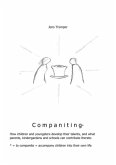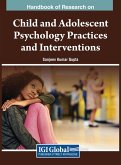Caregiving role rather than gender has a predominant influence on parent interaction in nonstressful as well as stressful situations. Primary caregiving fathers can competently assume caregiving and nurturant functions so as to become their infants' primary attachment figures. Based on videotaped home observations, Dr. Geiger examines the unique and interactive effects of the gender of the caregiver and the primacy of the caregiver role on parent-infant interaction. Dr. Geiger observed 56 parents of different gender (father-mother) and caregiving role (primary-secondary) interacting with their infant in a non-stressful situation. Then infants were placed under stress in a modified version of the Strange Situation. A gender X caregiving role analysis of variance indicated no gender or role effect for parents' and infants' affiliative behaviors under nonstressful conditions except for fathers' rough tumble play. A caregiving role and/or a gender X role interaction effect was observed on the attachment behaviors of parents (caregiving and displaying affection) and of infants (displaying affection, clinging, moving away, and exploring). Infants' play interaction was most synchronous with that of primary caregiving fathers. Finally, the caregiver role effect indicated on all infants' attachment behaviors under stress showed a distinctive preference for primary caregivers (fathers or mothers) with disregard for gender. Dr. Geiger's study indicates that primary caregiving fathers can be as competent as primary and secondary caregiving mothers. They were more affectionate, and despite an increased amount of assumed caregiving and household chores, primary caregiving fathers were more involved and in greater synchrony with their infant's play activities than primary or secondary caregiving mothers. This study challenges sex-role stereotypes and suggests benefits of modeling a more egalitarian upbringing. It presents strategies to resolve the dilemma of day care for infants. This book will be of great interest to students, scholars, and other researchers involved with early childhood education, socioemotional development of children, and developmental psychology, especially once it is acknowledged that father care in the home for infants less than one year of age has become the most common form of primary nonmaternal care arrangement (21.6%) adopted by employed mothers.
Hinweis: Dieser Artikel kann nur an eine deutsche Lieferadresse ausgeliefert werden.
Hinweis: Dieser Artikel kann nur an eine deutsche Lieferadresse ausgeliefert werden.








